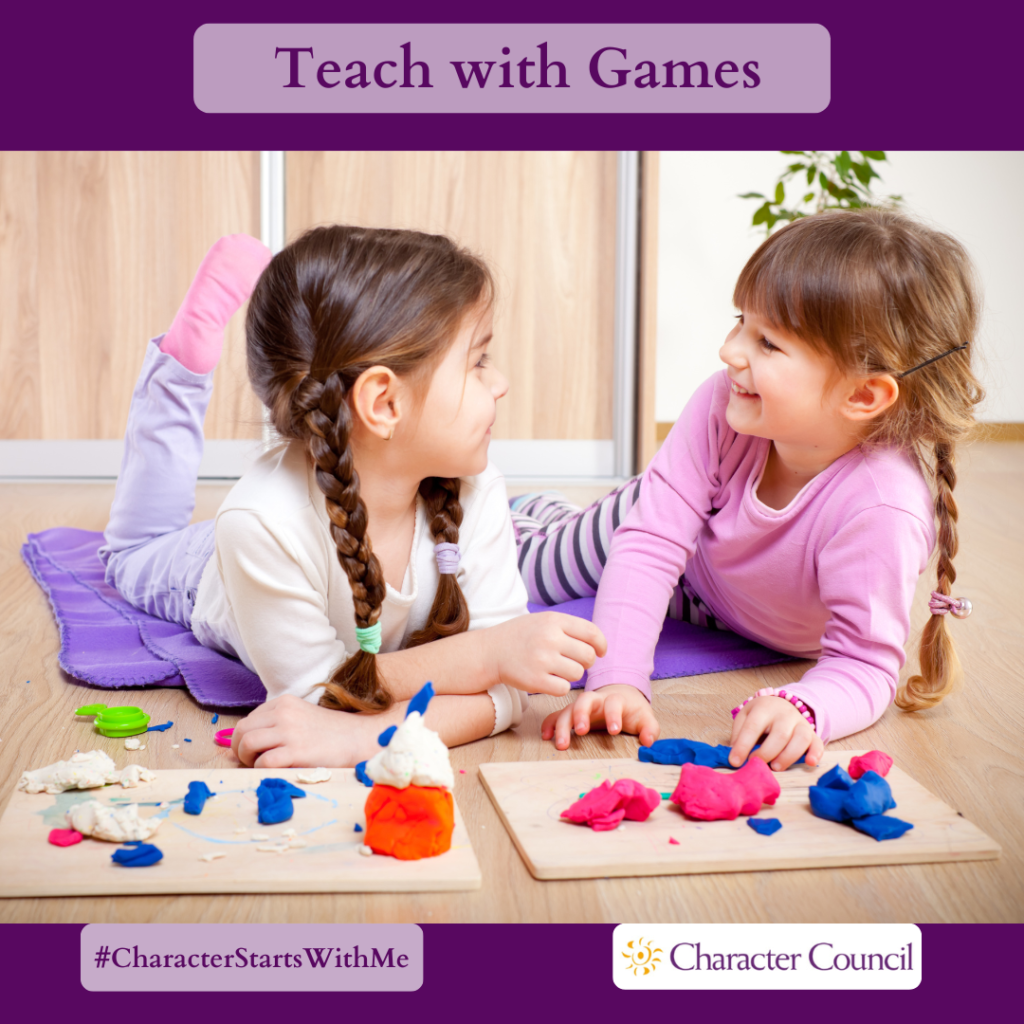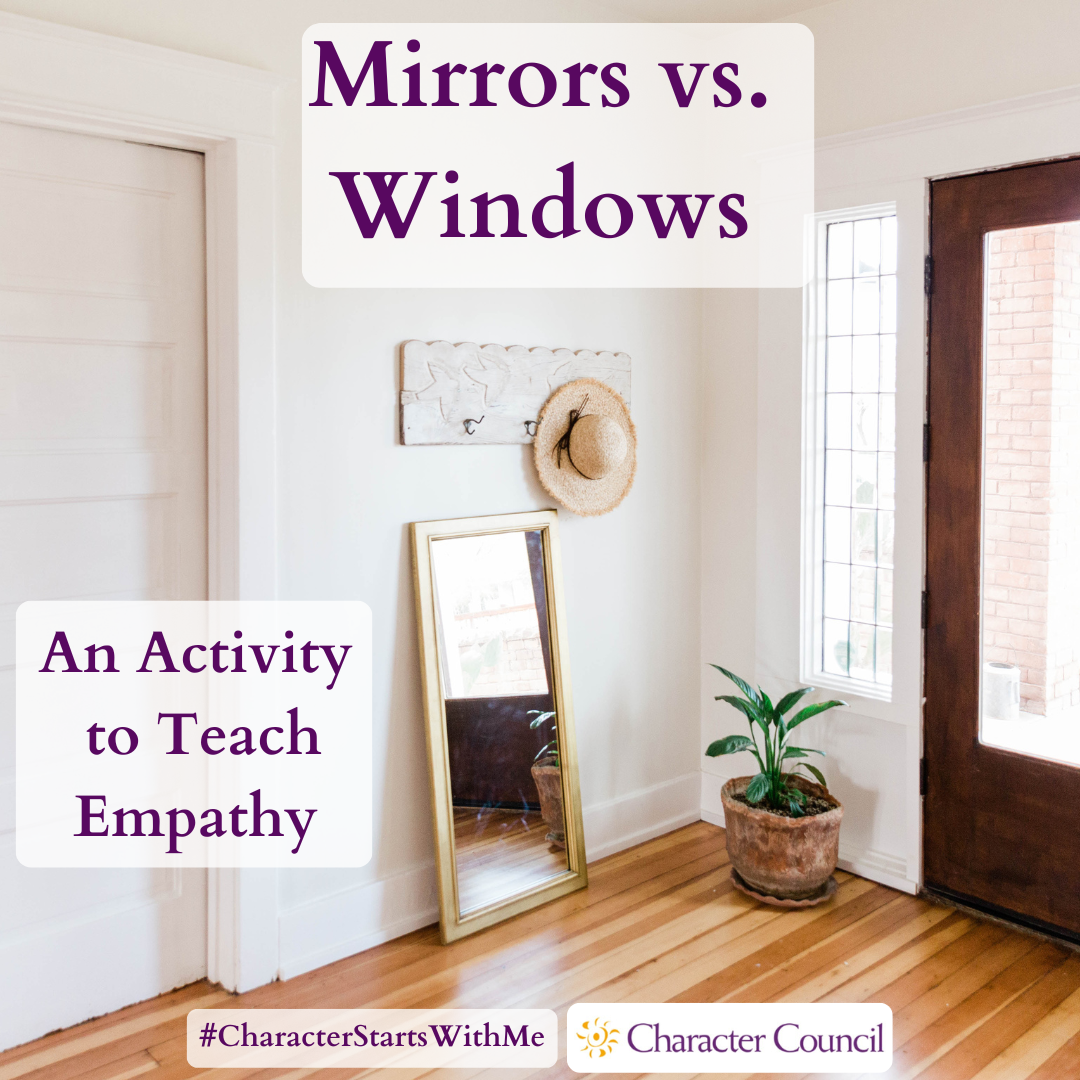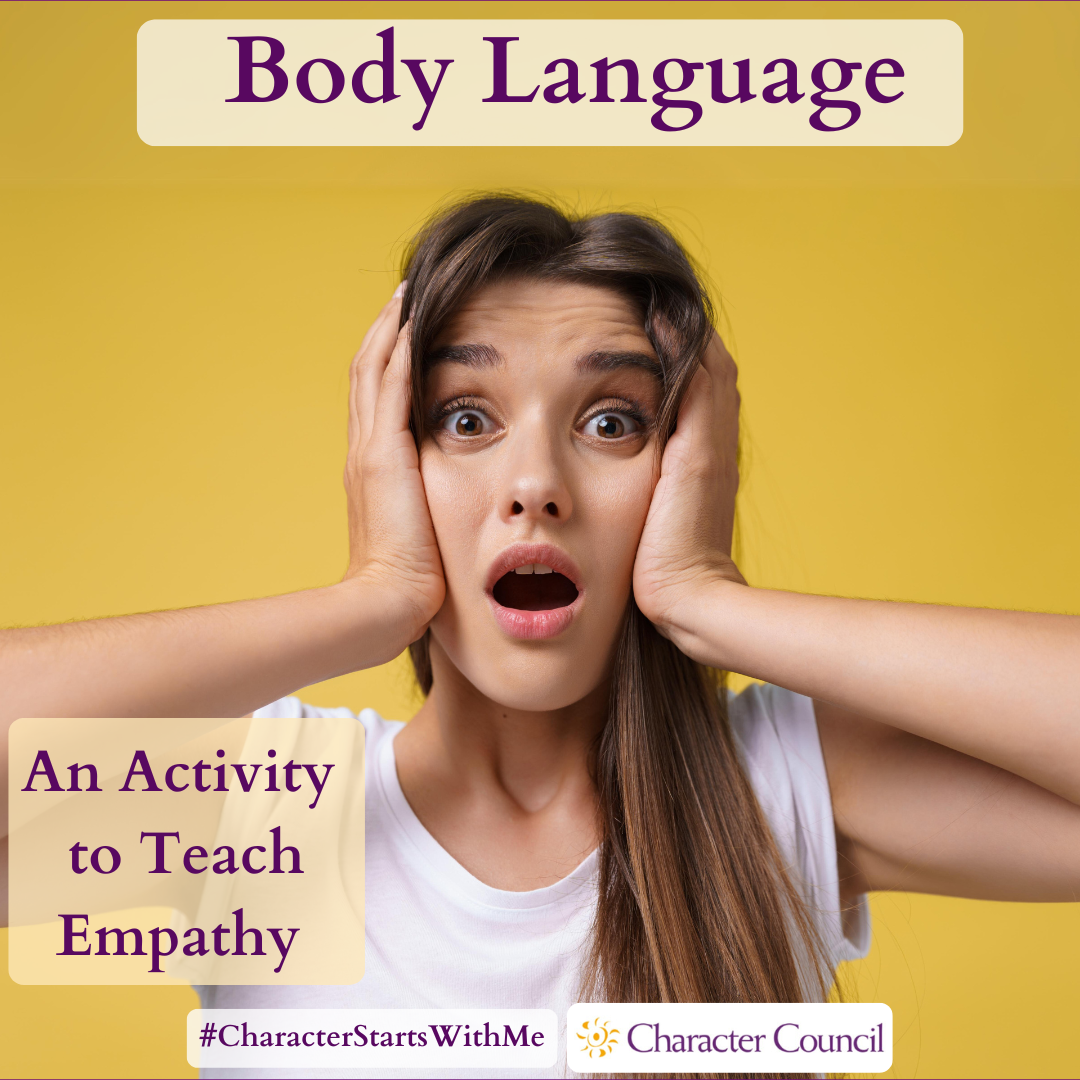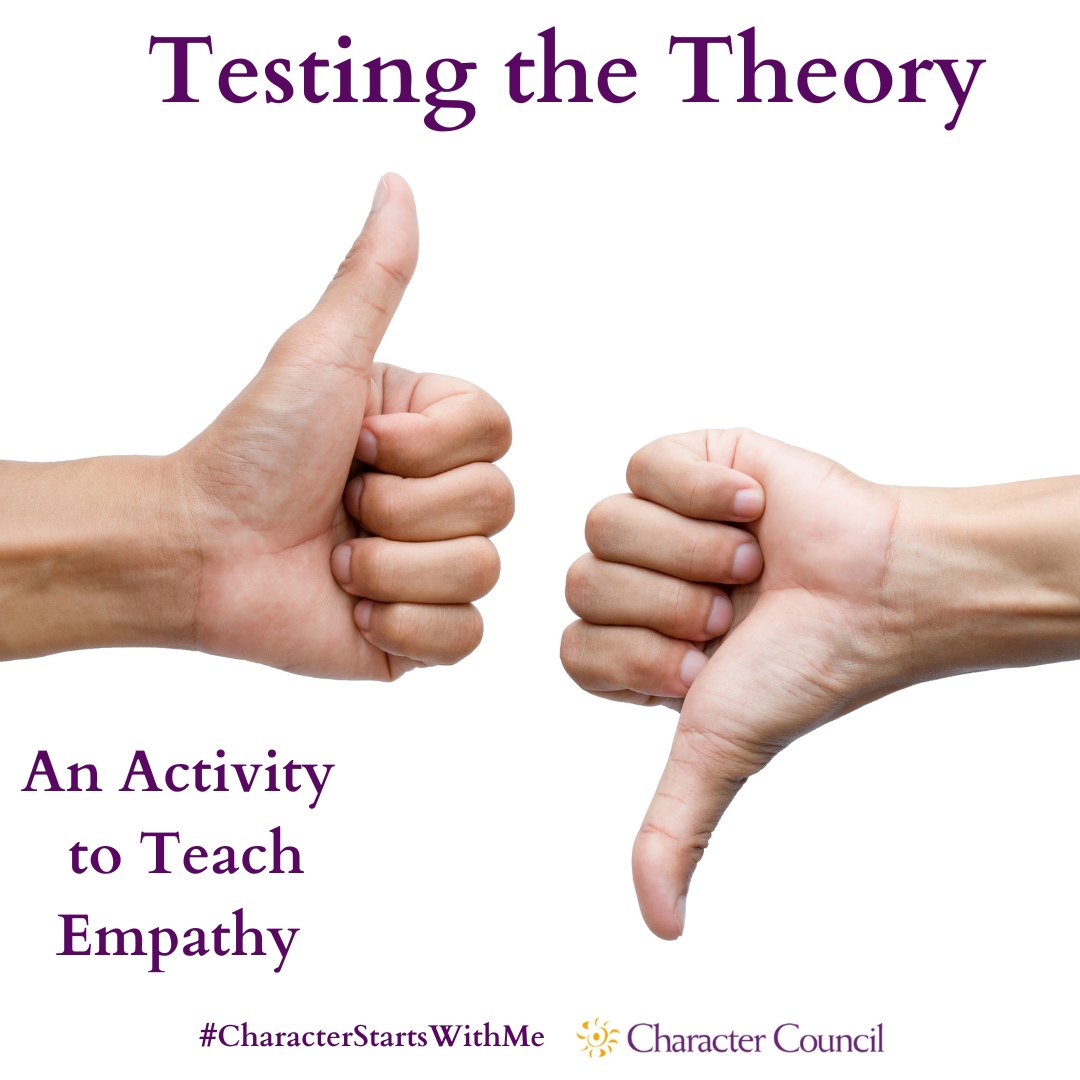
Empathy Activities
The activities here are fun ways to teach character. The game aspect makes the lesson more memorable. Each activity has processing questions at the end. Without processing the activity, the exercise is just a game. To make it a stronger lesson when you process it, relate the character quality to a core value that your organization promotes.
Consider picking a student to run the activity. You will need to give them time ahead of the activity to prepare. Another option is to pick a few students to run the activity for a younger classroom after you have run it for your class. Encourage your students to repeat it in the home for younger siblings or even parents.

Mirrors vs. Windows
Give each student a square of foil. Heavy Duty is best. It can be glued to a piece of paper, or the students can do that as their first step. Explain that this represents a mirror. Ask them what they see when they look at a mirror. (Yourself) Next, have them make a rectangle with their hands by putting their hands in front of them, the top facing out and the bottom facing in with the fingers pointed to the sides. To form a rectangle, place the index finger of one hand to the thumb of the other hand. Liken this to a window. Have them hold up their window, move it around, and ask what they see. (Other students). If your students do not have the manual dexterity to make the rectangle, you can choose to use ‘director’s hands’. Hold both hands out in front of you, palms facing away, fingers together, thumbs extended, and touching the other thumb. Ask about the thoughts that are in their head if they are looking at themselves. (Yourself). Ask the same for the window. (Others).
Empathy is sensing the emotions of others. Which is better for empathy – mirrors or windows? To do this, we must convert mirrors to windows. We must look beyond ourselves and be sensitive to the others around us. Now, you will make the foil mirror into a window. You can have them use strips of paper to make a window frame around the mirror and panes in the middle of the mirror. If you feel particularly crafty, you may also give them construction paper, wallpaper samples, wrapping paper, or fabric scraps to make “curtains” for their windows. If time allows, they can draw or color a picture around the window as if it is in the middle of a wall in a room.
To process the activity, ask these or similar questions:
- Have you ever thought of foil as a mirror?
- Have you ever seen your reflection in the glass of a window?
- Mirror-focused people are primarily thinking about who?
- Window-thinking people are primarily thinking about who?
- What’s it like to be around people who are mirror-focused? What types of things do they do or say?
- What’s it like to be around people who are window-focused? What types of things do they do or say?
- Who do you want to be around?
- Who do you want to be?
- Will foil remind you to be window-focused?
As a last step, you can have them write things they can do to be more other-centered on the window pane strips or somewhere on their picture.
Body Language
Reading non-verbal communication is a skill that takes time to develop. For this exercise, you will need to have 2 chairs or 2 desks and chairs in the front of the room facing the students. Select 2 students who have very expressive personalities. Give each of them one of the lists below. When you call out a number, they are both to act the way it describes at the same time.
Student #1
- Slouch in your chair
- Drum your fingers on the desk or your knee and look around
- Smile and lean forward, head at a slight angle
- Stand up and put your hands on your hips
- Initiate a handshake using a firm grip (not squeeze) and a single firm pump of the hands; look directly at them
- Receive the handshake in the manner in which it is offered
Student #2
- Sit up straight
- Smile, nod gently, and look directly at the speaker
- Cross your arms tightly, scowl
- Stand up and put your clasp your hands behind your back
- Receive the handshake in the manner in which it is offered.
- Initiate a handshake with the other person using a loose grip and no movement; look down.
Teacher:
- Do #1. Who is showing respect for the speaker?
- Do #2. Who is showing boredom with the speaker?
- Do #3. Who is showing anger?
- Student #1, fold your arms, but you aren’t angry. You are cold.
- Ask the class what Student 1 could do differently to avoid being classified as angry.
- Do #4. Who is showing defiance?
- Ask the class to suggest changes to both students that would reverse the perception.
- Do #5.
- Do #6
- Whose handshake said, ‘I’m somebody worth getting to know’?
- Whose handshake said, ‘You’re somebody worth getting to know’?
When the exercise is over, process it with these or similar questions:
- Was it easy to tell how people were feeling?
- Do you think it makes a difference if it is somebody you know versus a newcomer?
- Why is it important to practice empathy and try to determine how others are feeling?
- Do you act differently based on how you think they are feeling? (do you ask Mom or Dad for a treat if they are in a bad mood?)
- Once you use your Empathy and determine that someone is sad, what can you do about it? What do you want others to do when you feel sad?
- Will you remember this exercise when you are practicing Empathy?
Testing the Theory
Empathy is seen as a prevention for bullying behaviors by increasing the connectedness among the students. This exercise will demonstrate how our behaviors can connect us. Start by discussing that there is a theory that bullies hurt other people because they are also hurting. There is a mistaken belief that if you make other people hurt when you hurt, it helps your own hurt go away. Let’s put that theory to the test.
Have the students answer these questions with thumbs up or thumbs down.
How do you feel when someone does something kind for you?
How do you feel when you do something kind for someone else?
How do you feel when someone does something that is not nice to you?
How do you feel when you do something that is not nice to someone else?
How do you feel when those around you are happy?
How do you feel when those around you are sad?
If you are grumpy and you grumble at people around you, how will that make them feel?
We’ve already said that you feel sad around sad people, so being grumpy towards others can actually make you more miserable!
If you are sad, and you want to be around happy people to help you feel better, should you do mean things or nice things?
Does this mean we shouldn’t feel sad?
It’s okay to feel sad. It’s not okay to take it out on other people. If you are sad a lot, tell a trusted adult who can help you figure out what you can do.


